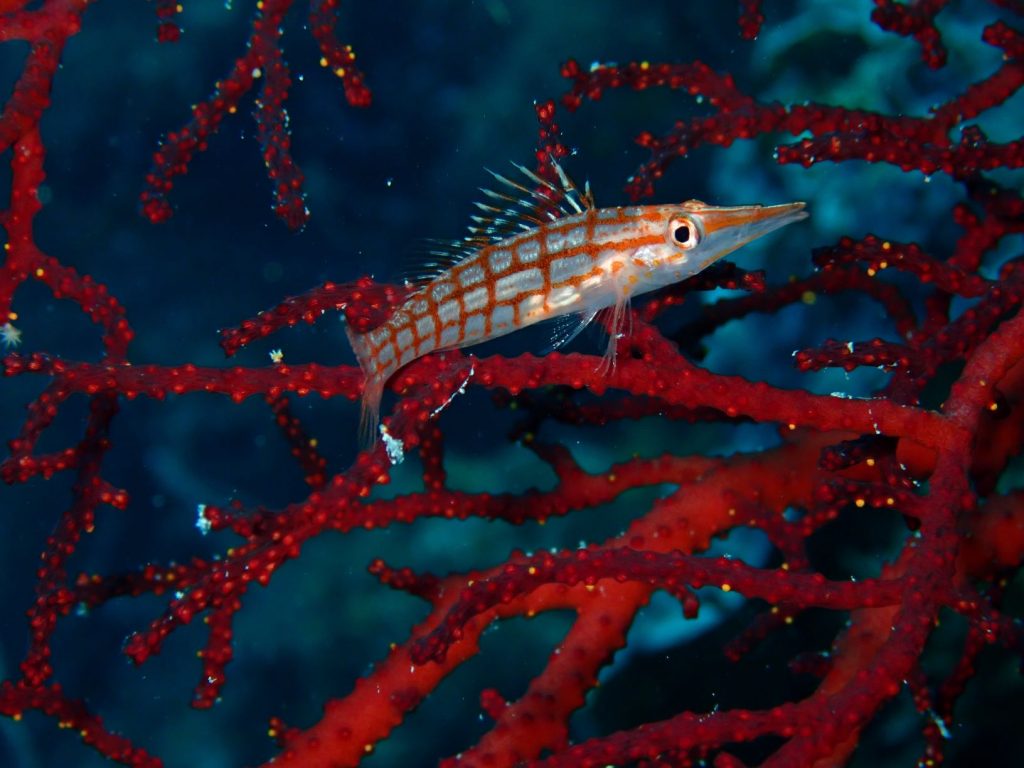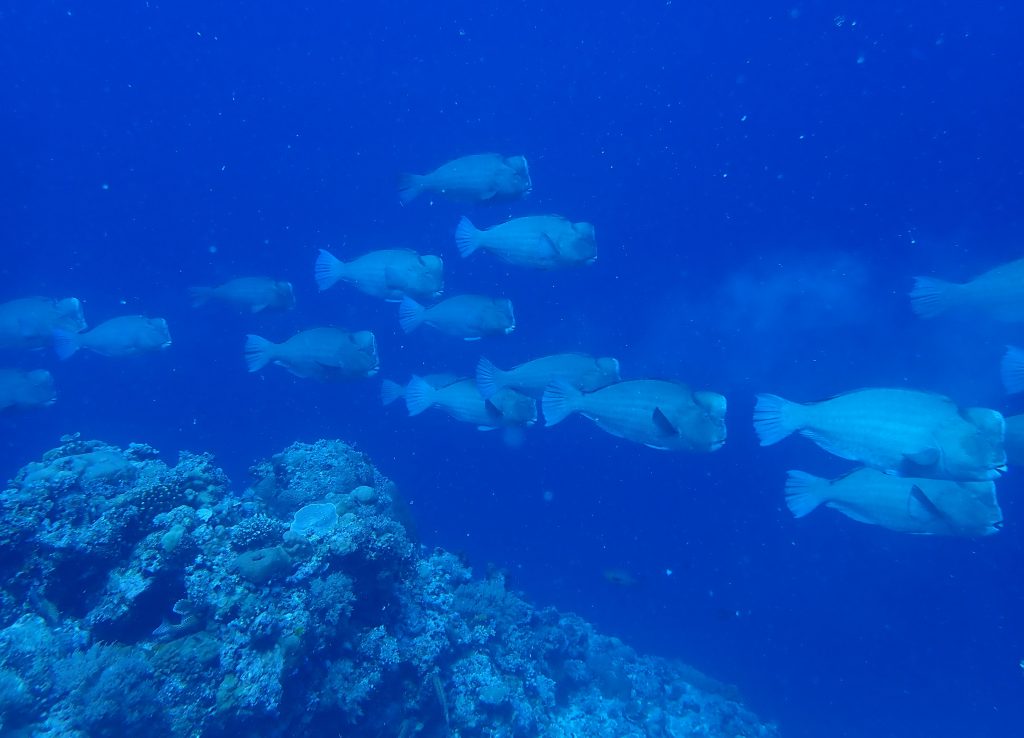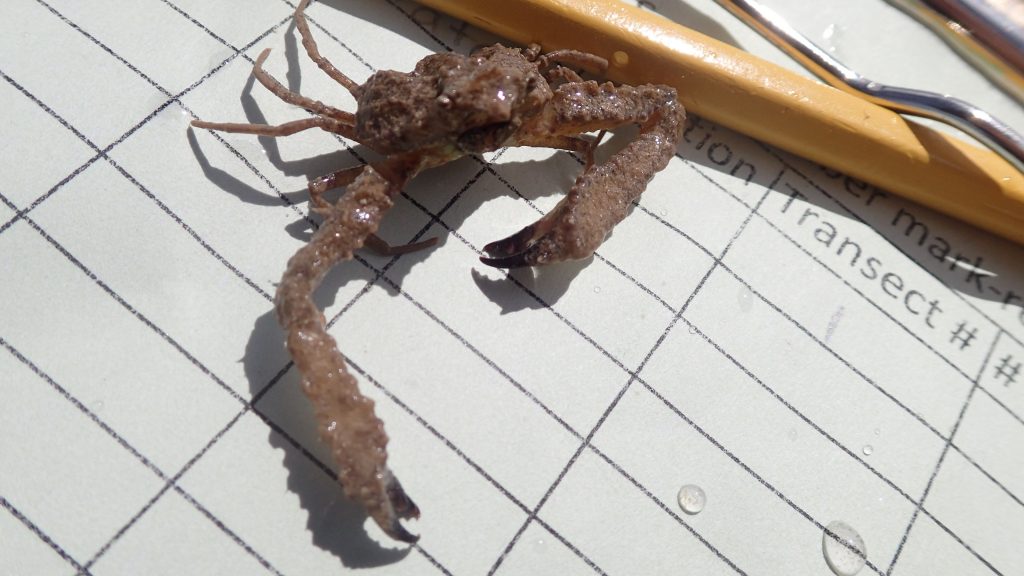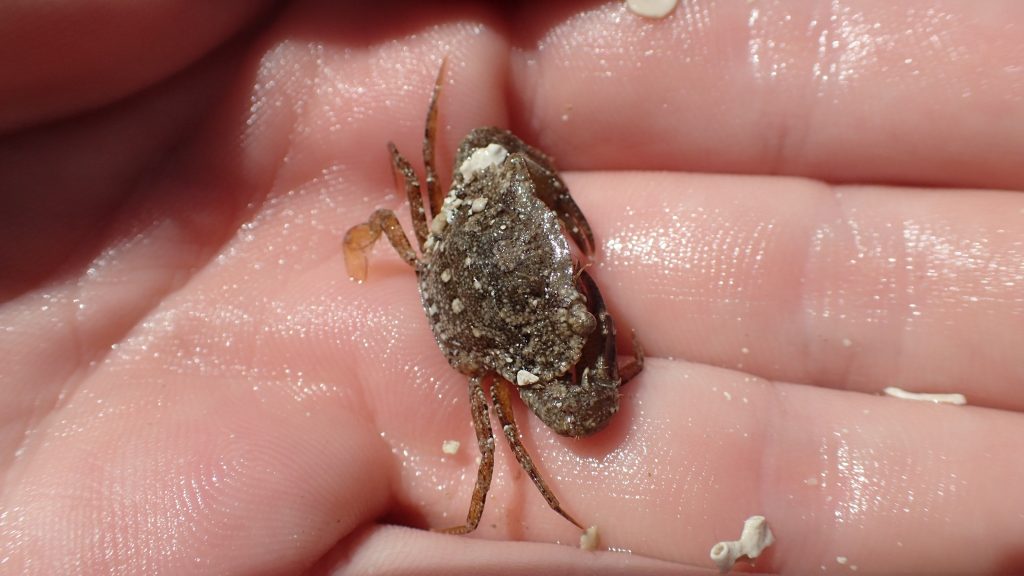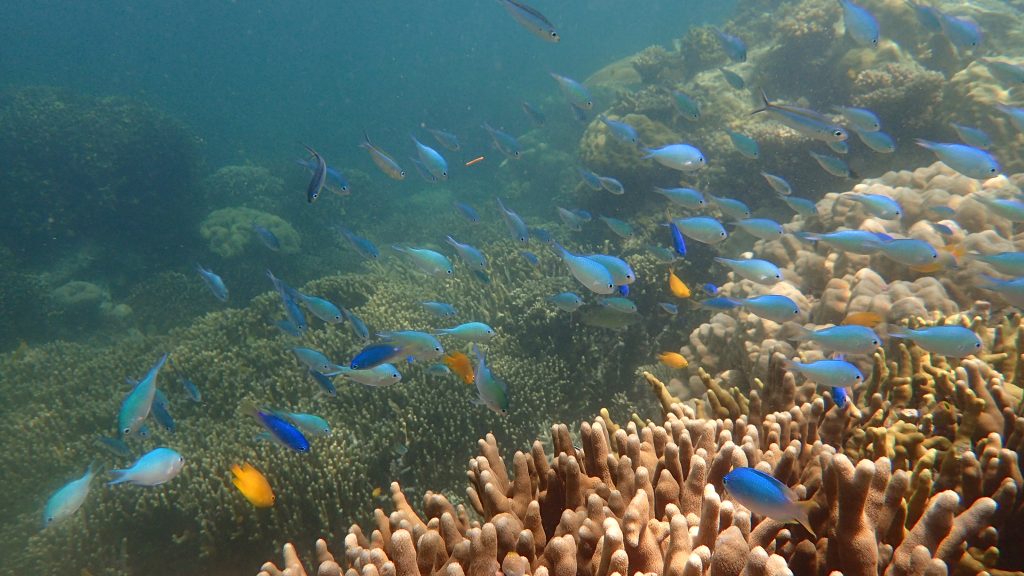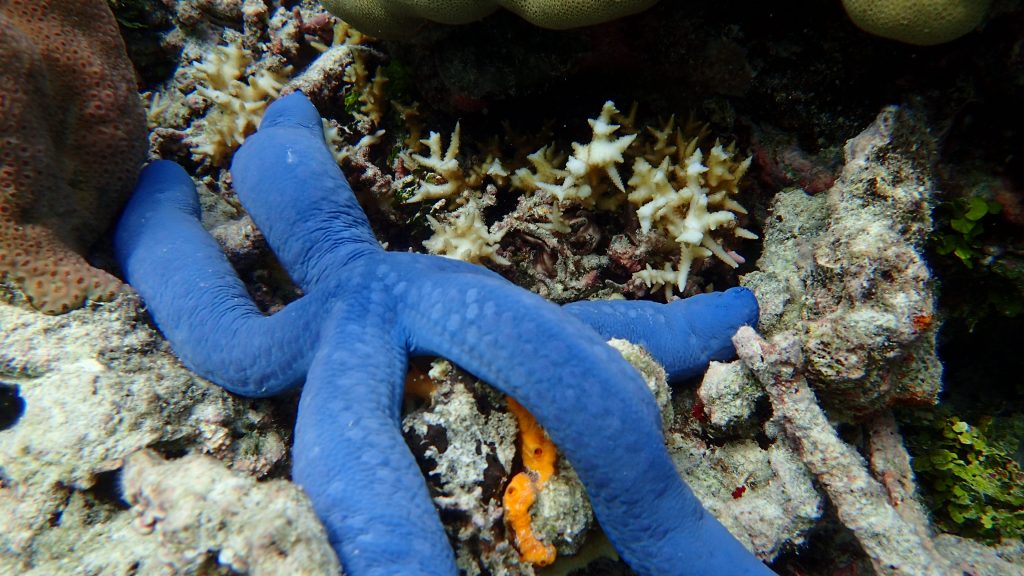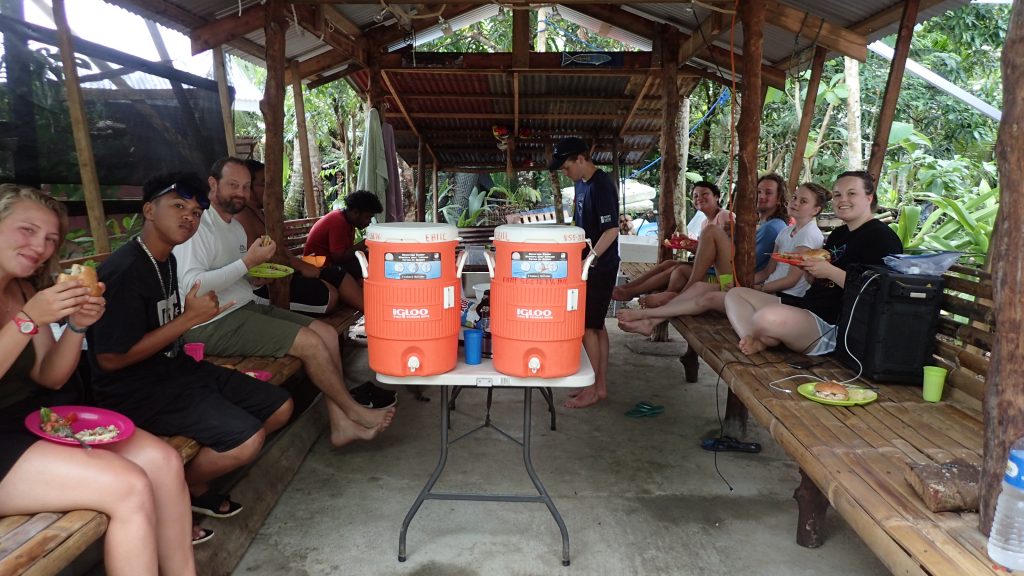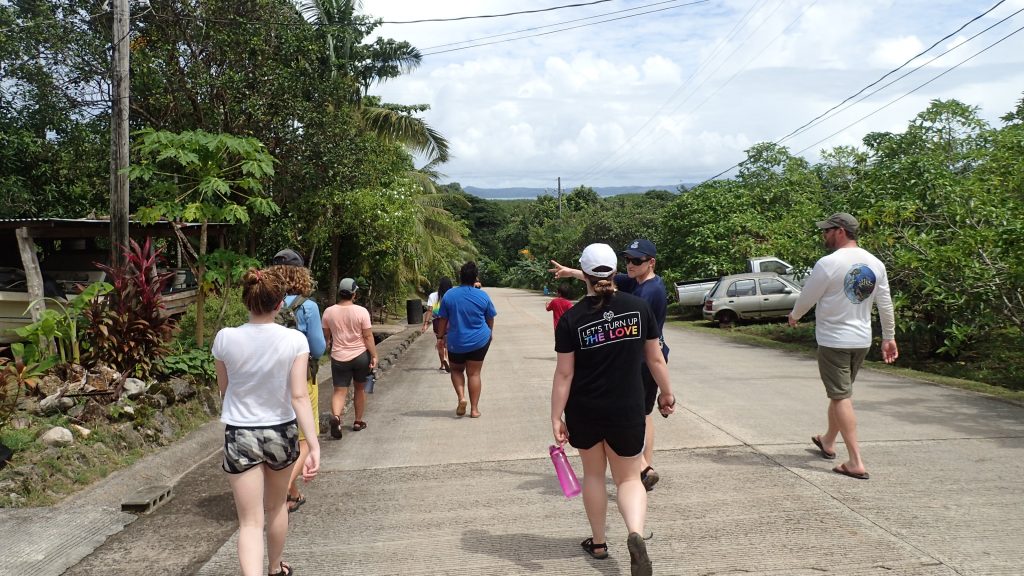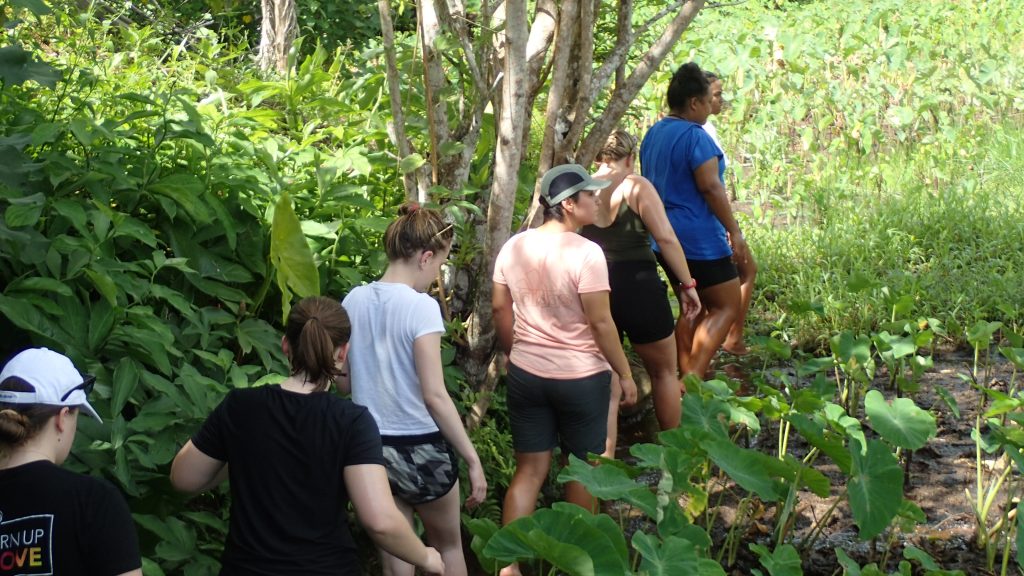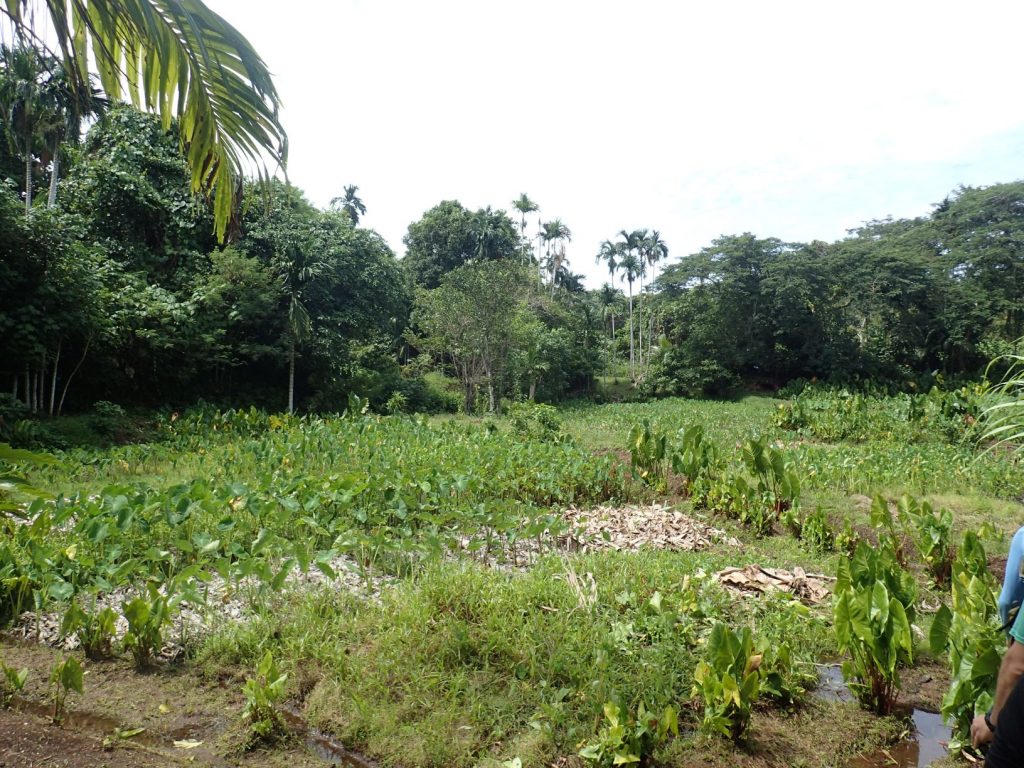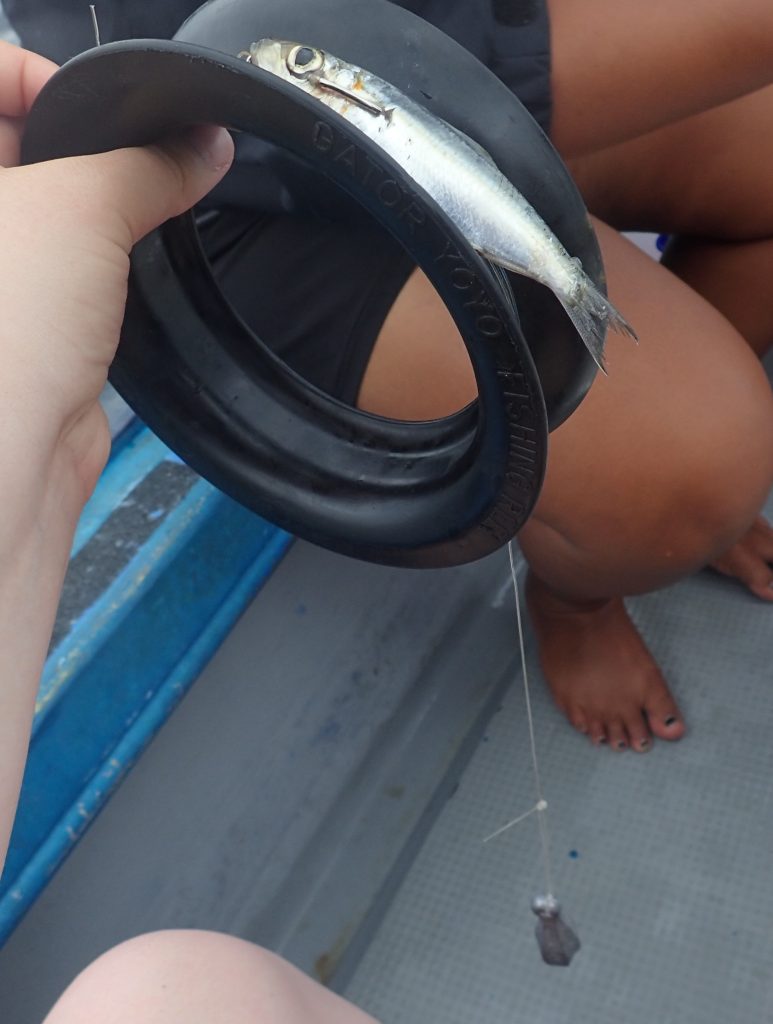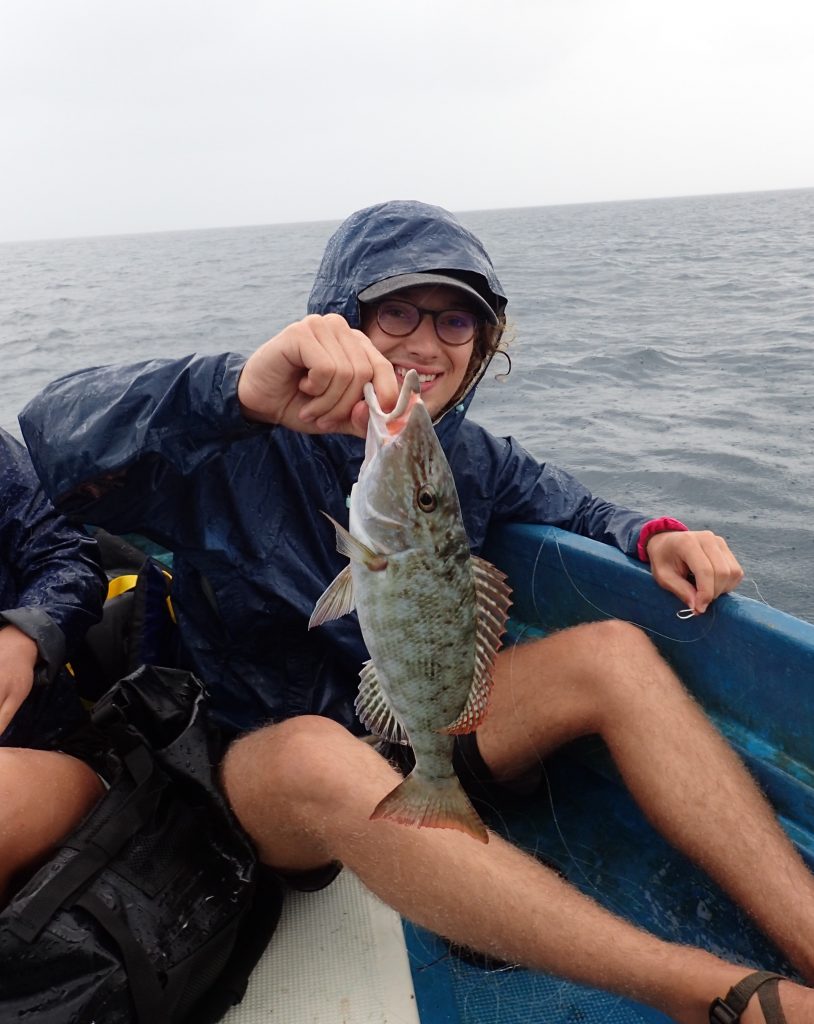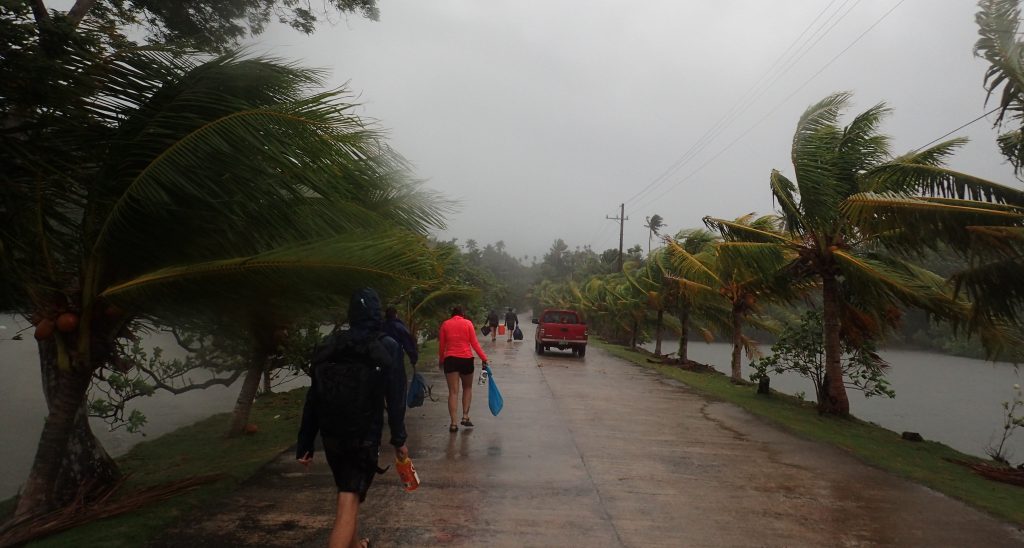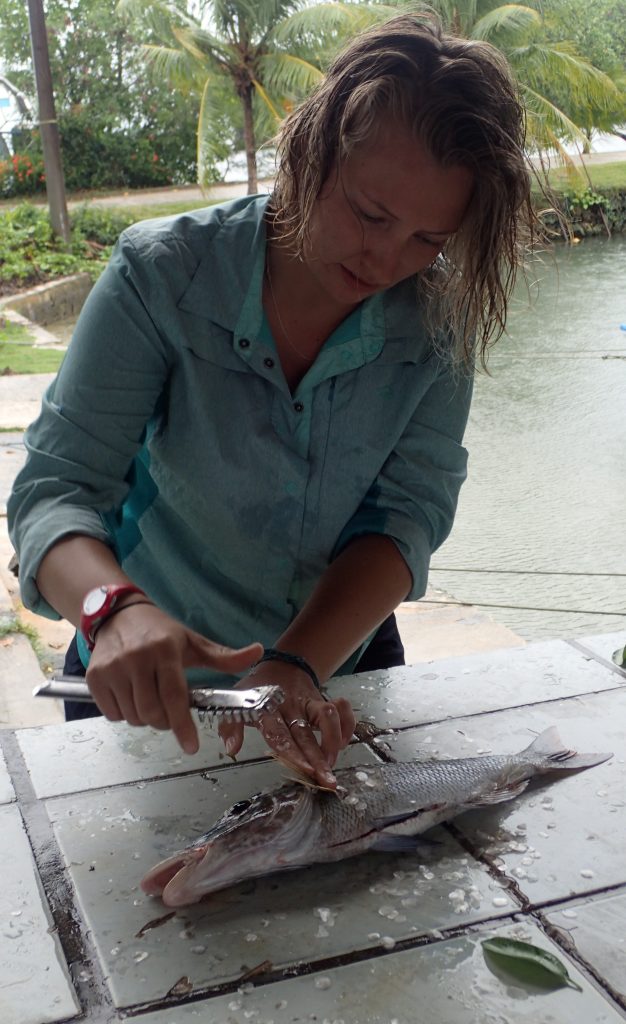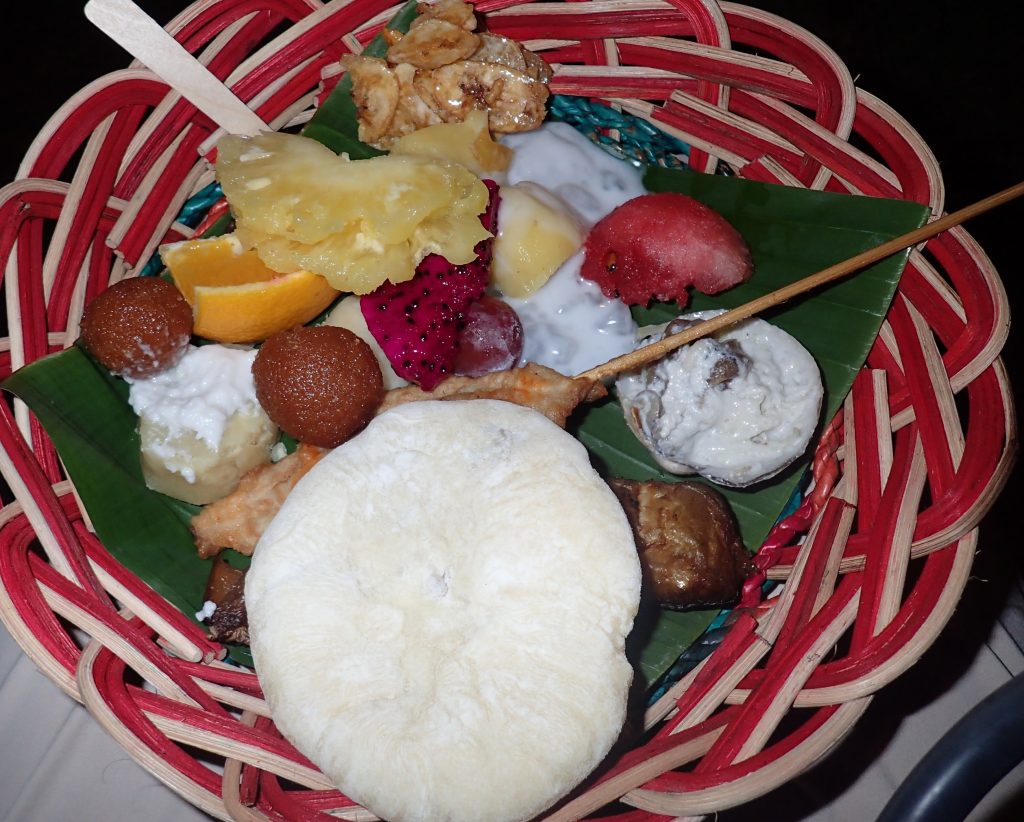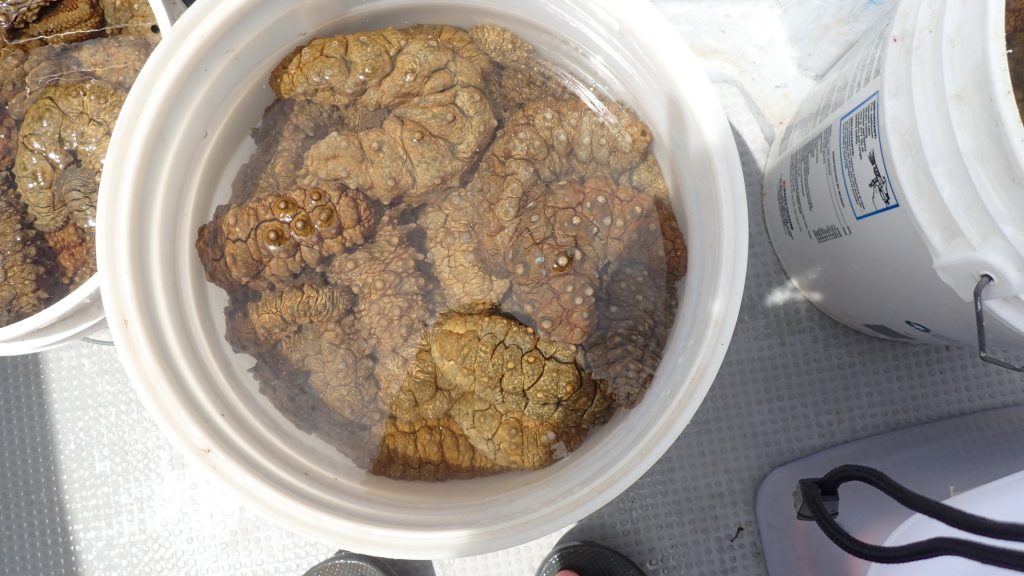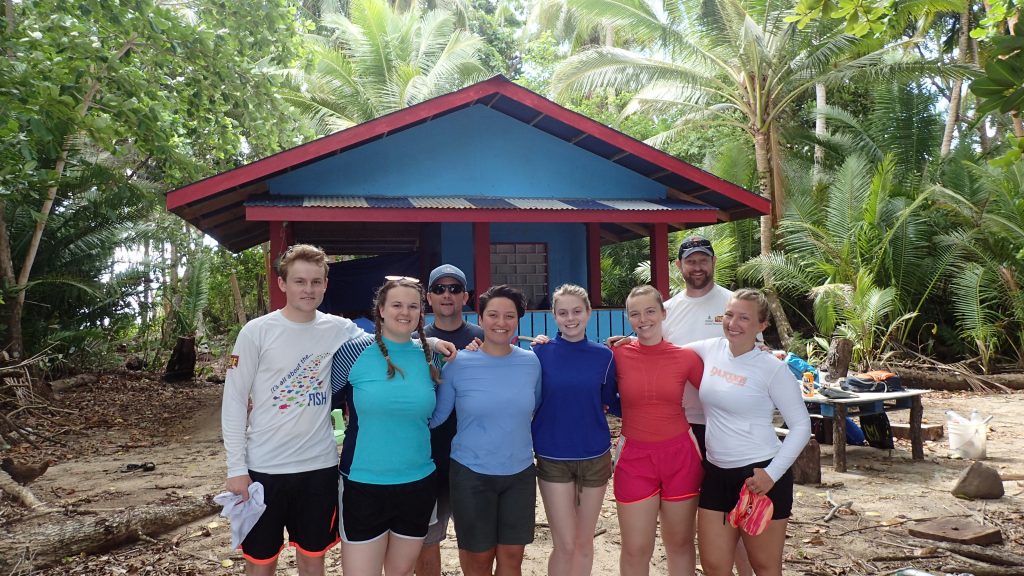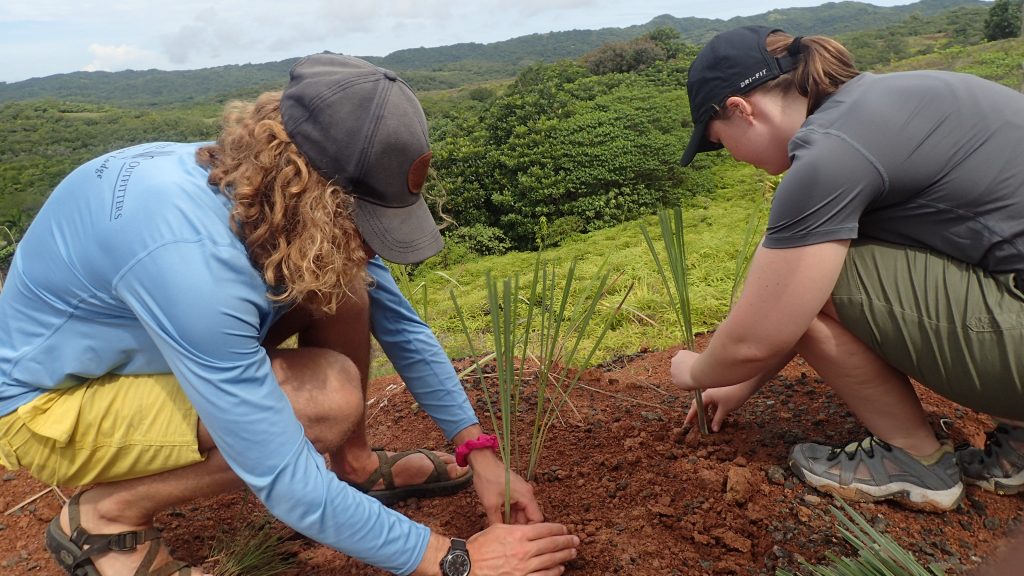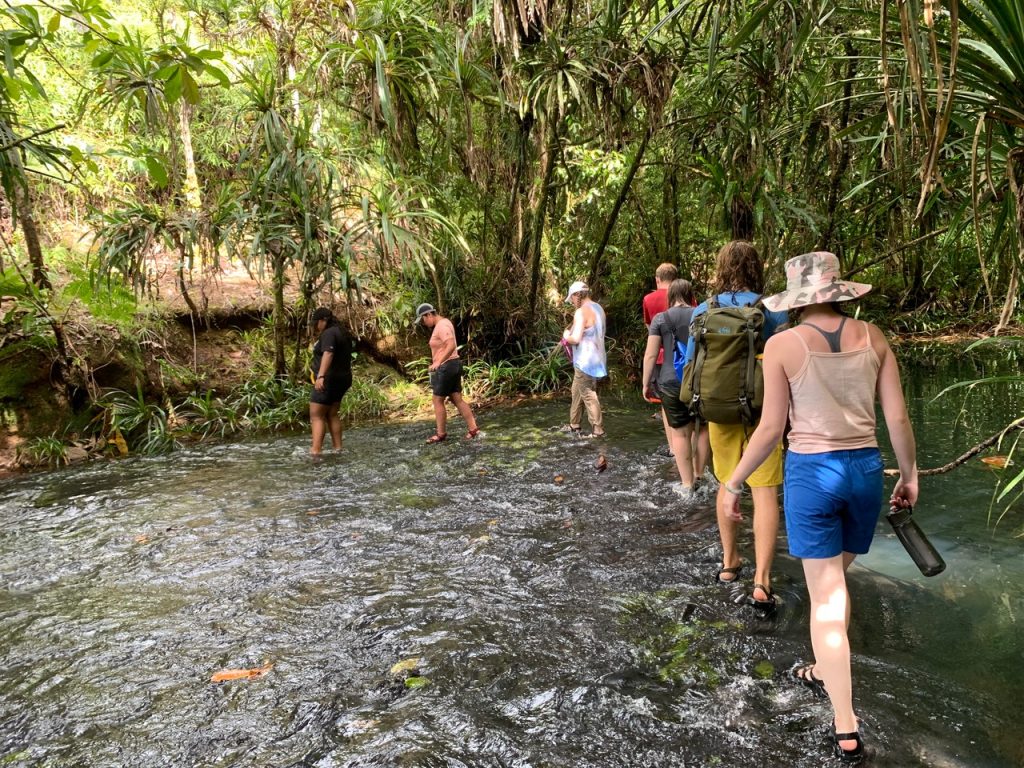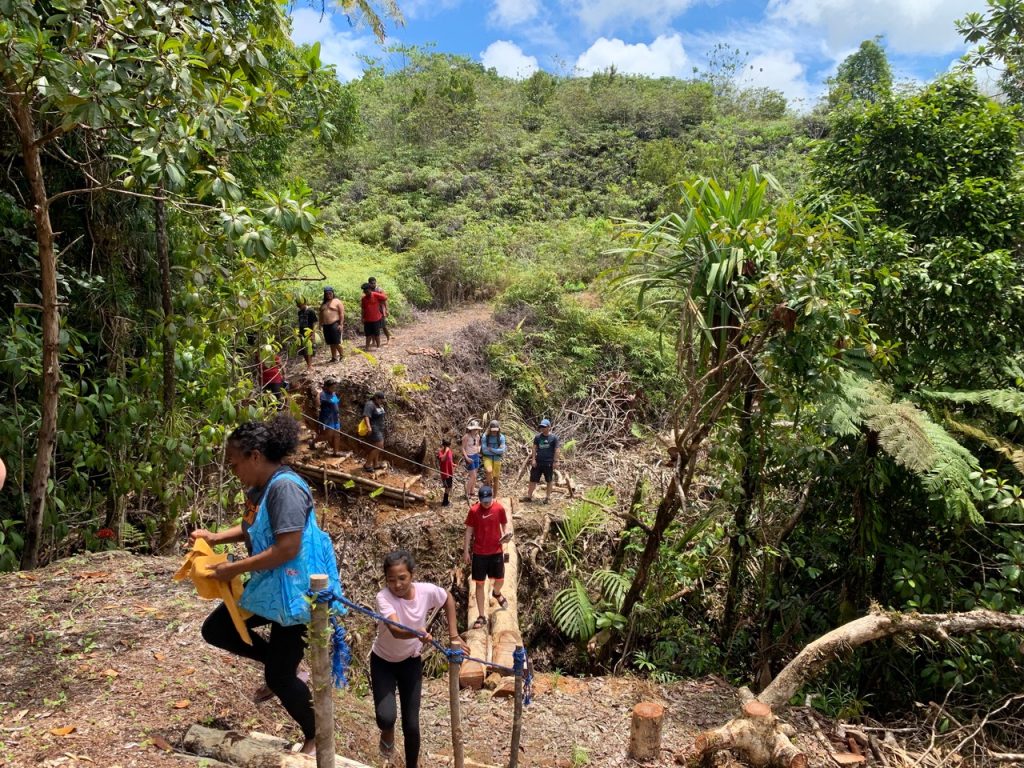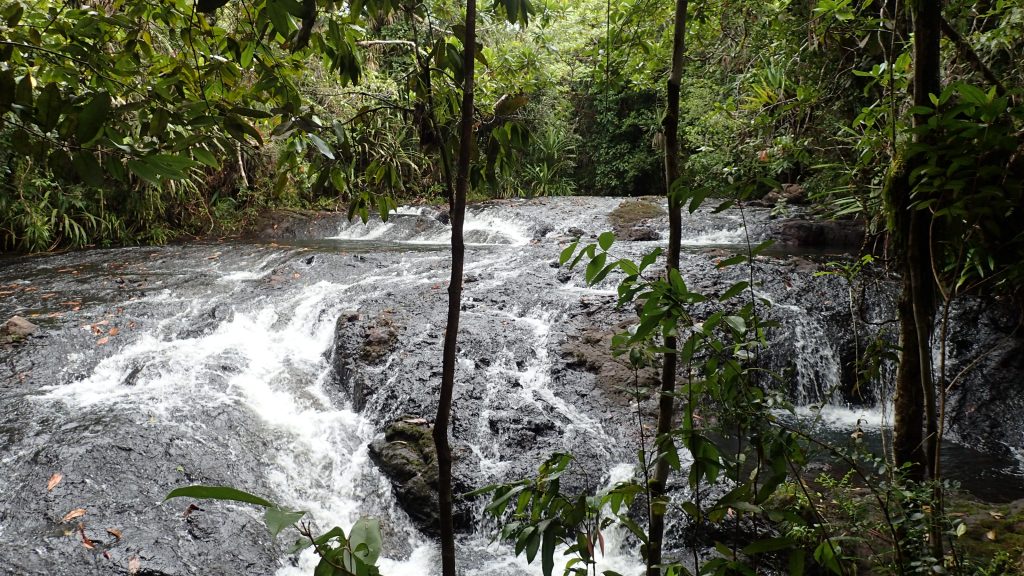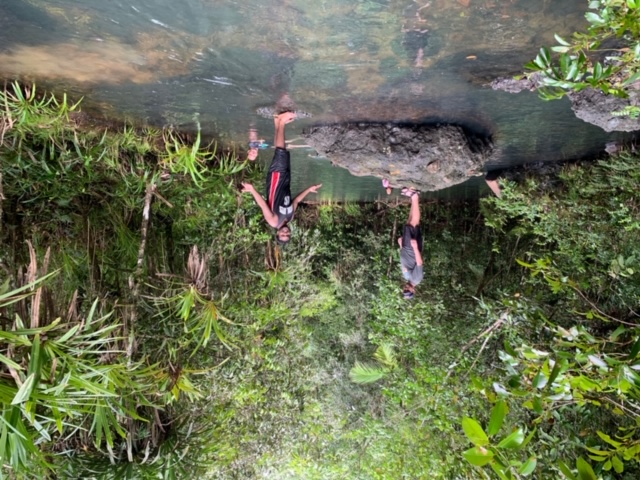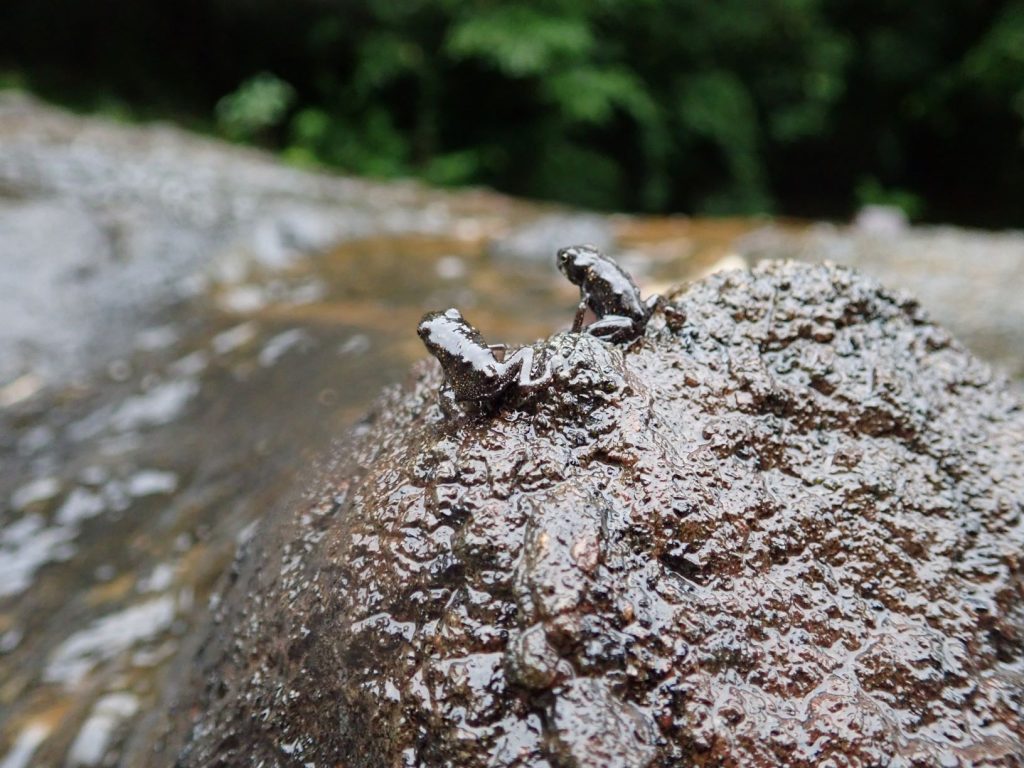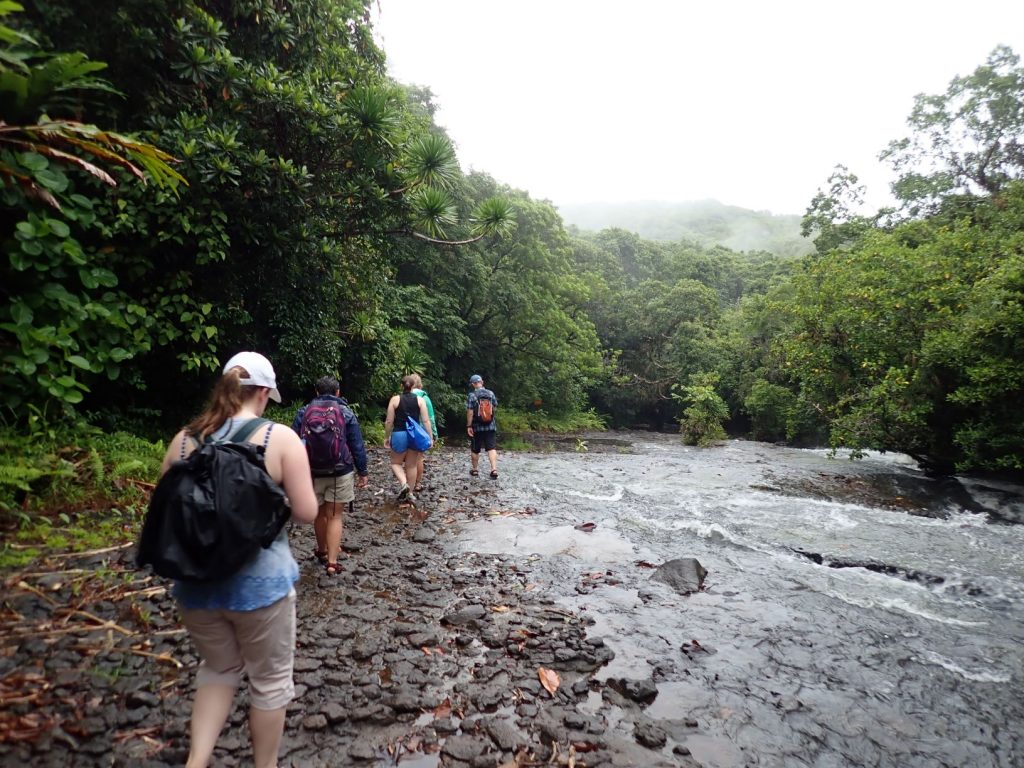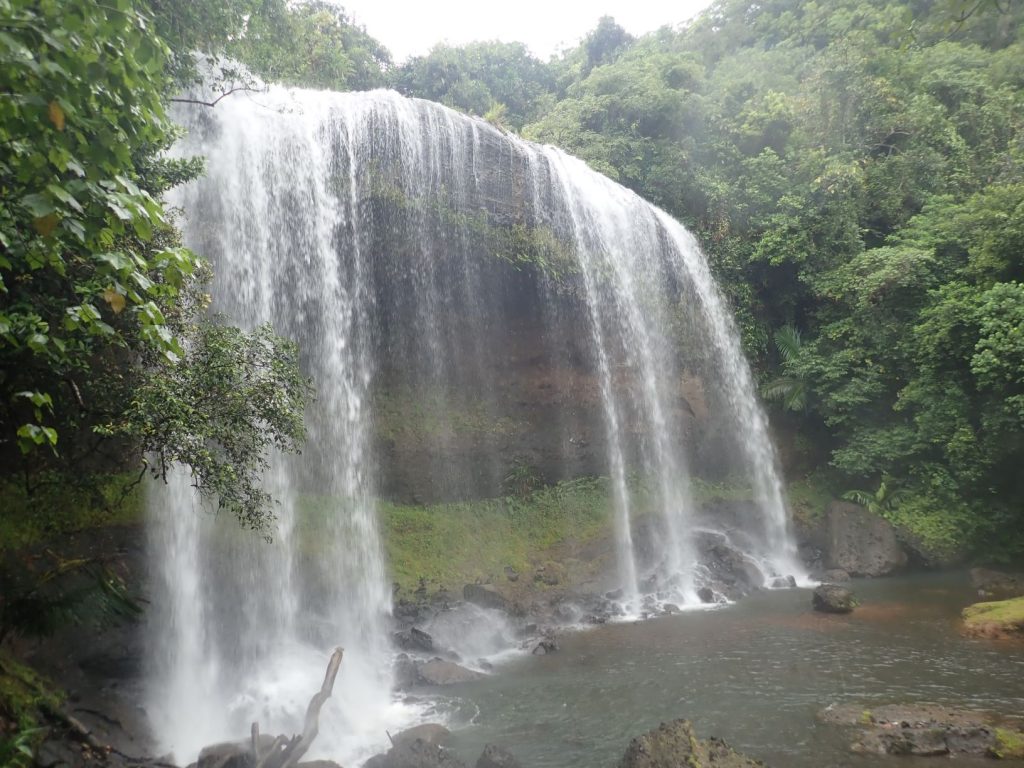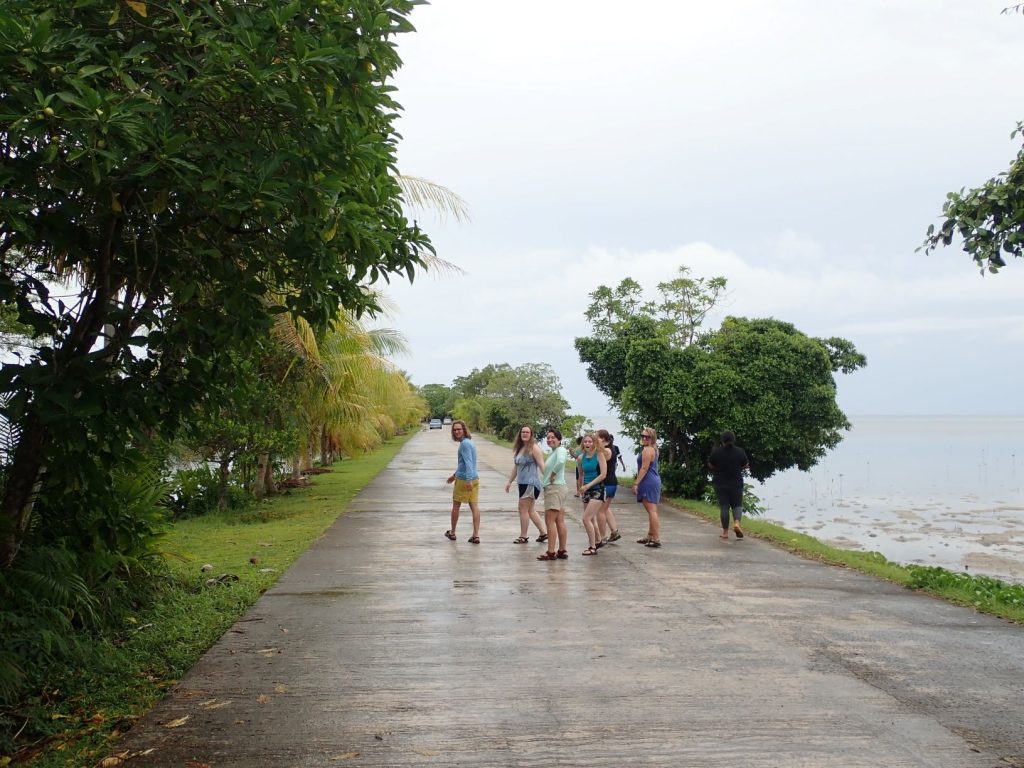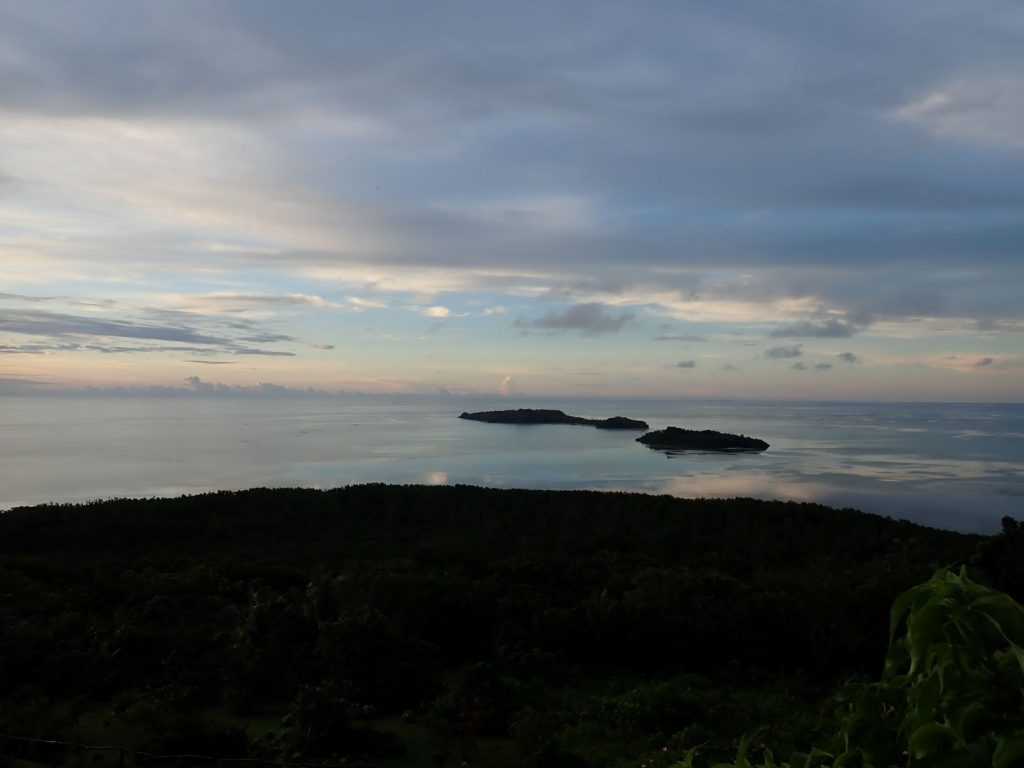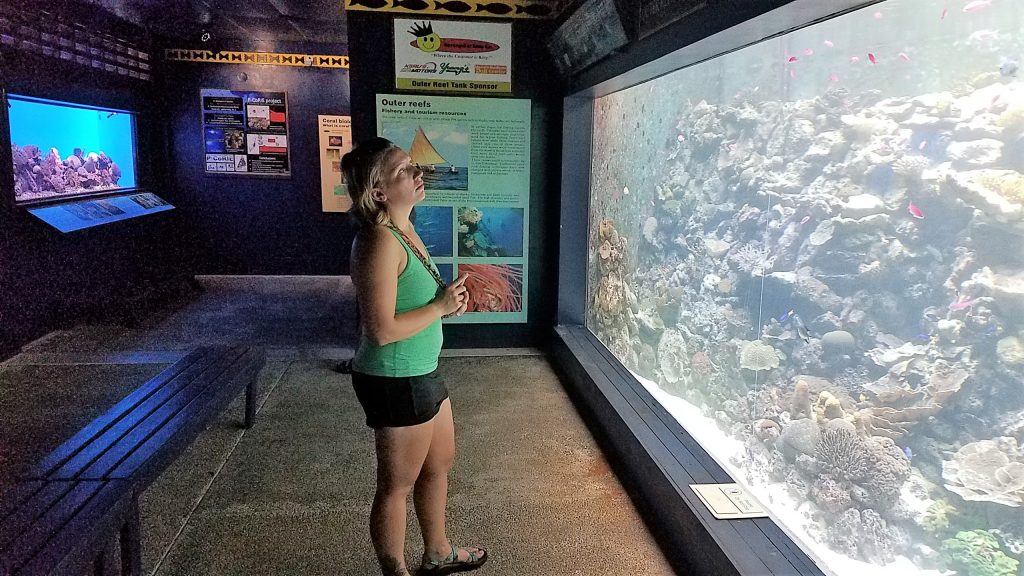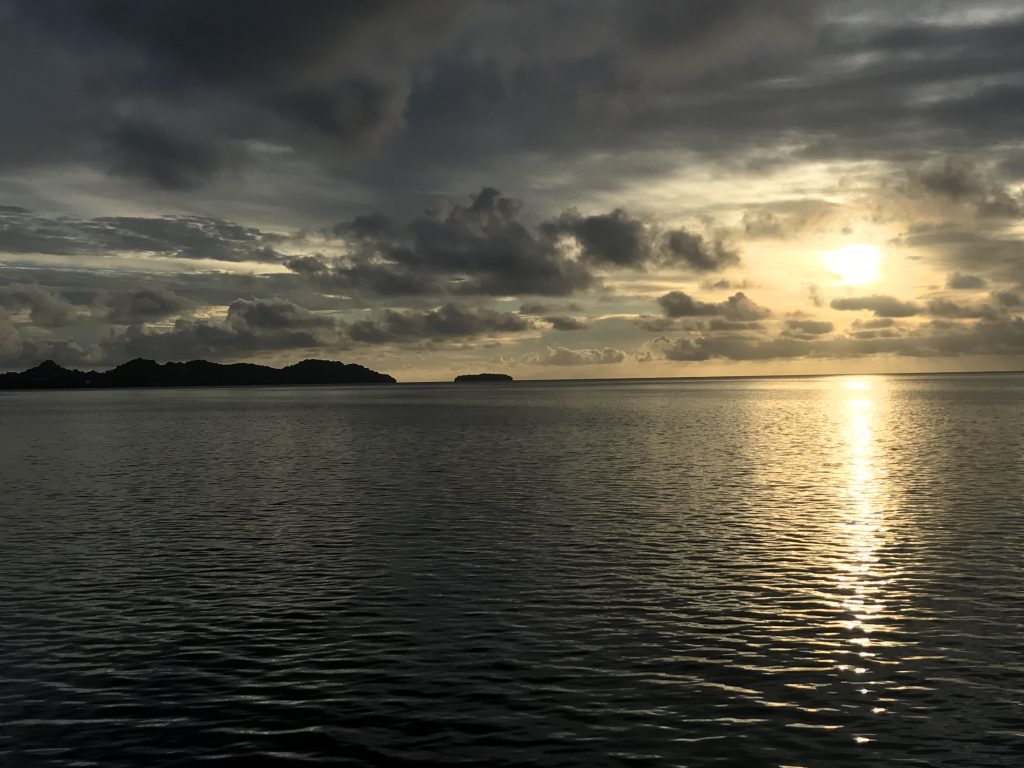As we start our time back in Koror, some of us are relieved for a mellower day (healing sunburns and staying mostly dry) indoors attending presentations by the Palau Conservation Society, the Palau Community College’s PAIR high school students, the Palau National Marine Sanctuary, and the Division of Marine Law Enforcement.




We arrived at the Palau Community College around 8:30am to listen to a couple of the PAIR high school students present their research and get some feedback before they leave to present in Washington DC at the National Institute of Health Conference. In preparation to hearing them, Chris Kitalong was happy to fill the time gap with personal history and research of his actions in Palau, with the college, and with his own experiences and research. He is a Palauan scientist whom leads the PAIR program and guides local youth to be involved and learn about their community from a science perspective.

After some technical difficulties, we were able to view the Coconut Rhinoceros Beetle poster and learn briefly about some of the research on the effects it’s having here in Palau with the coconut trees. Quick description includes: The beetles have been found to be killing the coconut tree (a very resourceful plant here in Palau) in the Pacific islands, with Guam no longer having the tree and Hawaii losing it’s population quickly. Research shows that in the lower populated areas of the Palauan islands have less tree damage ,while the areas that clear vegetation for building have more tree damage due to having more downed trees for beetle reproduction areas. These CRBs (Coconut Rhinoceros Beetle) have been narrowed down to two types with one type being susceptible to a virus that kills them after injection and release back into the vegetation. The research is very important to preventing the future death of the coconut tree and Ya-Ya will be presenting this in Washington DC next week.

After our quick morning at PCC, we arranged to come back later in the afternoon to view the rest of the presentations and provide feedback. We hopped in the vans for a drive over to the Palau Conservation Society to meet with the executive director- Abolade (Bola) Majekobaje, project coordinator- Bernie Besebes, and John, the once Protected Areas Network Coordinator and law enforcement ranger and now legislator and PCS program coordinator.
They provided such fun and interpretive materials with their conservation work with the locals nationally. As well as explained some of their neat international partnerships working to improve and conserve Palau for future generations. Check out the video below for a fun way of seeing some of the successful projects come to life!


Pictured above is the Okeanos Sailboat in the port that some of the PCC students sailed on during their recent research of the Coconut Rhinoceros Beetle damage on southern islands. Be sure to check out the rad (once Australian Navy) boat the Marine Patrol now uses behind it!

Elsei Tellei with the Palau National Marine Sanctuary provided a wonderful presentation of the PNMS work within Palau and the Marine law enforcement. Covering the importance in topics such as the fisheries, food security, education, tourism, and even some of the fishing laws in place and ones that will soon take effect.



After an engaging discussion and view of the patrol boats and surveillance room with the PNMS folks, we headed back to PCC for more student presentations and possible Bai roof help work.



That just about wraps up our long day of classroom like sessions. Dinner, leftovers, and homework ends the evening splendidly. Jellyfish Lake tomorrow and we can’t wait for more snorkel adventures. Until next time.. 🙂
Published by:
Destiny Pauls, Natural Resources- Conservation Law Enforcement, Class of Spring 2021







